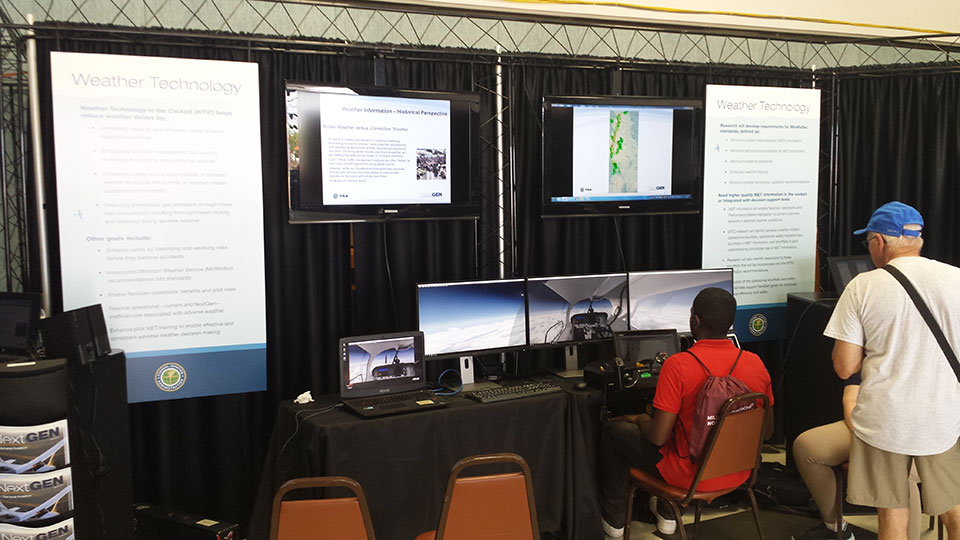Participate in Cockpit Weather Display Training at AirVenture
July 19, 2017 - The Partnership for the Enhancement of GA Safety, Accessibility, and Sustainability (PEGASAS) Weather Information Latency Demonstrator (WILD) located in the Pilot Proficiency Center at EAA AirVenture Oshkosh 2017 is part of an FAA Center of Excellence research program examining challenges related to safety, accessibility, and sustainability in general aviation.
The Weather Technology in the Cockpit (WTIC) project is one of more than 20 under the PEGASAS umbrella and aims to address the number of weather-related accidents in general aviation, 80 percent of which are fatal, that have continued at historic rates despite increased use of and significant improvements to in-cockpit weather technology.
During AirVenture, pilots are encouraged to fly the program’s WILD simulator, which demonstrates in real-time just how delayed the information can be on common weather displays used in the cockpit when compared to actual “out-of-the-window” conditions. Pilots can register in the Proficiency Center for private training sessions on the demonstrator to help increase their awareness of this delay, as well as the potentially fatal consequences for VFR and even IFR pilots considering flights in deteriorating weather. Thus far, the WTIC project has identified more than a dozen major gaps in knowledge, skills, abilities, assessment technology, and presentation associated with aviation weather.
Findings of the WTIC research will assist the FAA in defining minimum weather service standards and developing educational and technological solutions that will help improve safety for GA. While PEGASAS does not actually produce any products or devices, the research team may propose solutions regarding topics such as the role of alerting technologies in pilot decision-making and the format and features of weather information displays — in addition to the impact of the lag time between real and displayed weather data, which the aviation industry and educational community can adopt in their developments, designs, and curricula.

